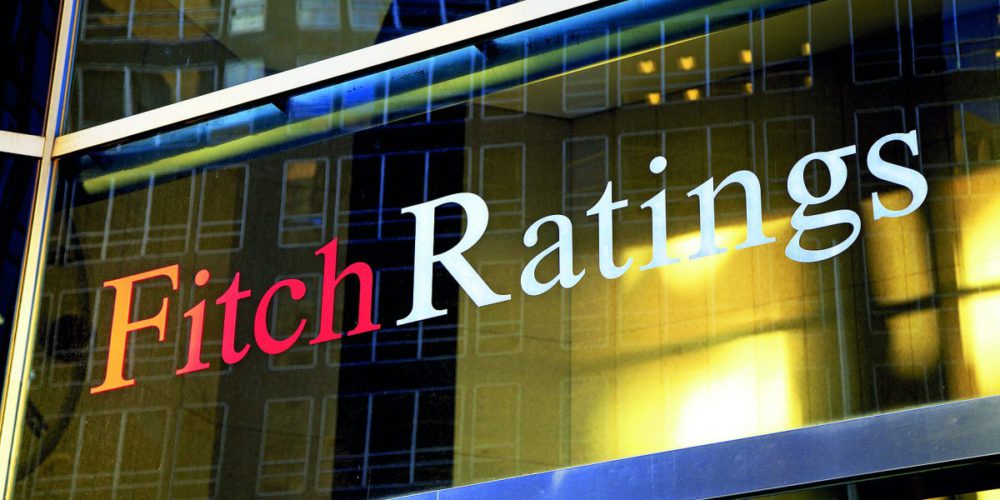With GDP growth exceeding 8 per cent for three consecutive quarters, Fitch Ratings expects an easing in growth momentum in the final quarter of the current fiscal year, implying an estimate of 7.8 per cent for growth in the financial year 2023-24. This growth forecast by the global rating agency is 20 basis points higher than the government’s estimate of 7.6 per cent.
India’s economic growth has continued to outperform forecasts; real GDP rose by 8.4 per cent year-on-year in the October-December quarter, a much stronger increase than Ficth said what it had expected. India’s GDP grew at a massive 8.4 per cent during the October-December quarter of the current financial year 2023-24 and the country continued to remain the fastest-growing major economy.
The Indian economy grew 7.8 per cent and 7.6 per cent during the preceding two quarters – April-June and July-September. The strength of domestic demand has driven the economy to a 7 per cent plus growth rate in the last three years. India’s economy grew 7.2 per cent in 2022-23 and 8.7 per cent in 2021-22, respectively. For 2024-25, Ficth expects the Indian economy to continue its strong expansion, with real GDP forecast to increase by 7.0 per cent in 2024-25, a 0.5 percentage points upward revision from its December forecasts.
“Domestic demand, especially investment, will be the main driver of growth, amid sustained levels of business and consumer confidence,” Fitch said. Delving upon consumer price inflation, it outlined how it picked up in the last months of 2023 driven by food prices. CPI inflation reached 5.7 per cent in December, before falling to 5.1 per cent in February.
“We expect headline inflation to steadily decrease to 4 per cent by calendar year-end on the assumption that recent food price volatility will subside,” Fitch said. “The RBI has kept its key policy rate at 6.5%, and in its communication has focused on confirming its hawkish policy stance of “withdrawal of monetary accommodation” and the need to bring inflation down towards target. We now think that the RBI will cut rates only in 2H24 and by 50bp (revised from 75bp in December) in view of the stronger growth outlook.”
The retail inflation in India though is in RBI’s 2-6 per cent comfort level but is above the ideal 4 per cent scenario. Barring the recent pauses, the RBI has raised the repo rate by 250 basis points cumulatively to 6.5 per cent since May 2022 in the fight against inflation. Raising interest rates is a monetary policy instrument that typically helps suppress demand in the economy, thereby helping the inflation rate decline.
At the latest monetary policy meeting, the RBI pegged India’s retail inflation projections for 2024-25 at 4.5 per cent, with Q1 at 5.0 per cent, Q2 at 4.0 per cent, Q3 at 4.6 per cent, and Q4 at 4.7 per cent, with risks evenly balanced. Meanwhile, Fitch Ratings has raised its 2024 global GDP growth forecast by 0.3 percentage points to 2.4 per cent in its latest Global Economic Outlook (GEO), arguing that the prospects for growth world over in the near-term have improved and.
This reflects a sharp upward revision to the US growth forecast to 2.1 per cent, from 1.2 per cent in the December 2023 estimates. The revision to the US outweighs a marginal cut to its China 2024 growth forecast – to 4.5 per cent from 4.6 per cent – and a small revision to its eurozone forecast, to 0.6 per cent from 0.7 per cent.
The rating agency its latest report also revised upwardly the growth forecast for emerging markets excluding China by 0.1 percentage point to 3.2 per cent, with forecasts raised for India, Russia and Brazil. Fitch expects world growth in 2025 to edge up to 2.5 per cent (unchanged from before) as the eurozone finally recovers on a pick-up in real wages and consumption – but US growth slows.
“And with lagged effects from last year’s monetary tightening still to come through as real interest rates rise (in the US), we expect quarter-on-quarter growth to slow to a significantly below-trend rate later this year,” Fitch said. The eurozone continues to stagnate, with Germany’s recession weighing on France and the rest of the bloc, it said.
“The German economy faces structural growth constraints but it has also been hit by a string of major shocks that are unlikely to be repeated. Growth should pick up in the medium term as the ECB cuts rates, world trade recovers and the impact of the energy shock fades.” “China’s property collapse continues unabated – housing sales now look likely to fall sharply again this year – and evidence of deflationary pressures is rising. But fiscal easing is being stepped up materially and this has cushioned the impact on the GDP forecast.”
On the monetary policy side, Fitch expects both the US Federal Reserve and ECB to cut rates three times, by a total of 75 basis points, by year-end. “But both central banks want to see more evidence that recent disinflation progress is durable before starting out on the policy-easing process. We have pushed back the date of the first Fed cut to July from our previous expectation of June. We have also pushed back the date of the first ECB cut to June from April,” Fitch said.


















